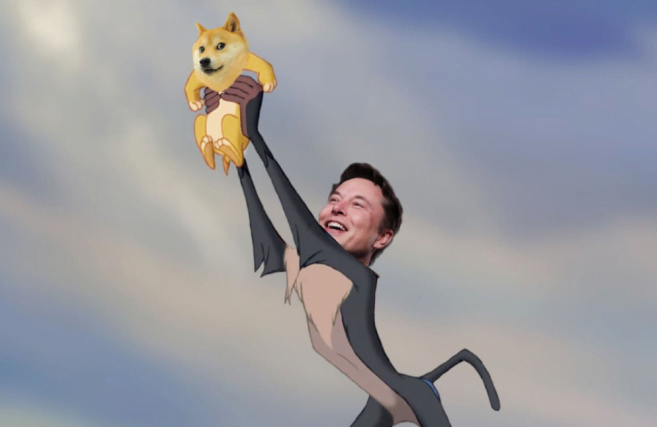Dogecoin (DOGE) is a meme-coin created in December 2013 originally as a joke. Software engineers Billy Markus and Jackson Palmer wanted to create a peer-to-peer digital currency that could reach a far broader demographic than Bitcoin. They used the face of the 2013 viral meme Doge, a Shiba Inu dog, to achieve this.
Dogecoin’s claim to fame
The underlying technology and consensus mechanism all come from Litecoin. It’s an inflationary coin with an unlimited supply. At the time of writing, the network has a total token supply of 132.6 Billion DOGE, with around 5 billion Dogecoins created yearly. Dogecoin was initially sought out as an online tipping medium for YouTubers, Redditors, and other digital content creators; thus, a small token denomination supported this niche utility. Despite all this, Dogecoin currently trades on all the major exchanges and is a top 10 coin by market cap.
Dogecoin’s claim to fame
Dogecoin gained notoriety and significant gain in 2019 (at the time of the bull market) when Binance, arguably the biggest exchange globally, decided to list it on its site. On the week of listing and prior, the doge price soared by 40%, though the most increase in popularity and gains were to be made in the bull market in May 2021, as Google trends illustrate.
Elon Musk, CEO of Tesla and self-proclaimed meme-lord, was a significant driving factor in the popularity and price momentum of Dogecoin. In 2021, through his announcement that Tesla purchased $1.5 billion worth of Bitcoin, his tweets significantly influenced the price and overall market sentiment of Bitcoin.
So what does this have to do with Dogecoin? Well, as you are aware, this one man has a noticeable effect on the market, and there is one coin he endorses above all else: that being, Dogecoin. Through a series of tweets, Elon Musk rallied the price by 33% after accepting doge payments for Tesla-branded merch. More importantly, Elon Musk announced his appearance on SNL in April 2021. As a result, DOGE skyrocketed 220% in the lead-up to the event, leading to an all-time high of $0.78. Doge, of course, was due for a heavy correction. In true “buy the rumour, sell the news” fashion, Doge plummeted 60% from the point Elon said the word Dogecoin on live television.
Rise of the clones
“Two things are infinite: the universe and human stupidity.”
Albert Einstein
The fame of Dogecoin saw the rise of copycat coins. These are meme coins with large uncapped supplies and tokenomics similar to Dogecoin. Shiba Inu is a notable copycat that was able to get enough traction to reach a listing on Binance. The price rose from $0.000007 to $0.00008, a monstrous 11x gain in the space of a month. Many named it the Doge killer, yet now the hype is over SHIB trades at $0.00001. During the peak of the bull run in early April 2021, the concept of meme coins (dubbed “shit-coins”) was rampant. Safemoon, Cumrocket, Feed Every Gorilla, and Shiba Inu are a few of the projects that saw astronomical gains. With the surge of such rogue projects came a wave of scammers and rug pulls; many gains were made at the expense of naive investors.
The Aftermath
After the hype over Dogecoin died down, the bull market’s correction, and the bloodbath of copycat coins, many saw Dogecoin for what it truly was: a meme. A report in August 2021 by chainalysis showed that only 535 entities held 82% of Dogecoin’s total supply; as you might imagine, this super-concentrated level of whale holdings isn’t sustainable in the long run. In the desolate grave of “crashed and burned” meme coins, Dogecoin remains king. However, the king of meme coins is nothing to brag about and is not an area I personally recommend investing in any time soon.


